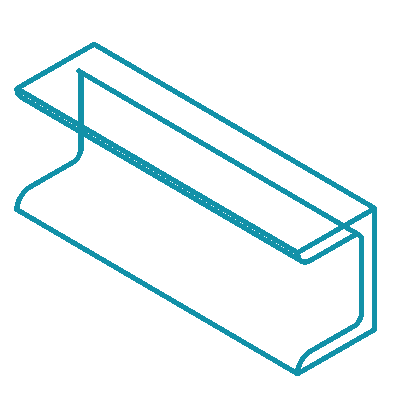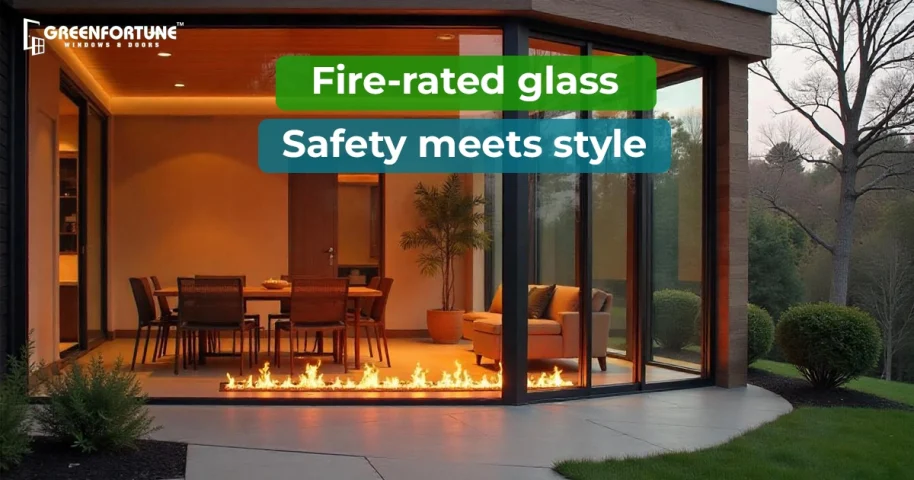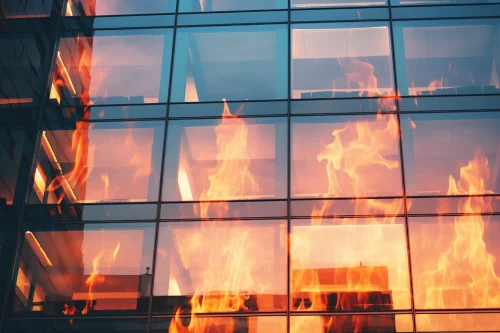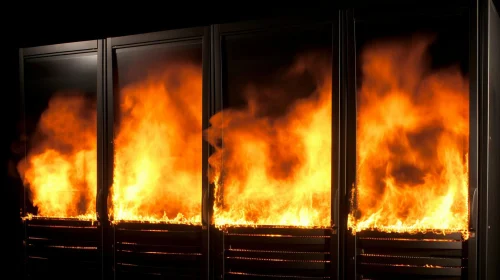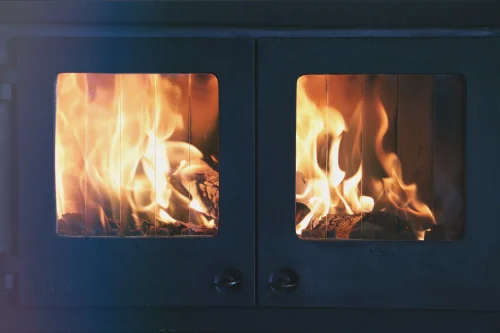
Glass Films: A Better Alternative To Privacy Glasses
April 1, 2025
What is Annealed Glass? Pros & Cons
April 1, 2025
Fire resistance glass, also known as fire rating glass, plays a crucial role in modern construction by offering protection against fire hazards. In environments like commercial buildings, residential complexes, and public spaces, fire-rated glass for doors and windows is a safety necessity.
But how does fire-rated glass work?
What are its benefits, and how much does it cost?
This blog provides a complete guide with statistics, data, and insights into fire rating glass.
Table of contents
- What Is Fire Rating Glass?
- How Is Fire Rating Glass Made?
- Fire Rating Glass Categories
- Benefits of Fire Rating Glass
- Fire Rating Glass: Cost and Availability
- Installation of Fire Rating Glass
- Fire Rating of Glass: Regulatory Standards
- How to Choose the Right Fire Rating Glass?
- Key Factors Influencing Fire Rating Glass Performance
- Is Fire Rating Glass Worth the Investment?
- Conclusion: Fire Rating Glass – A Critical Investment for Safety
- Green Fortune Windows and Doors: Your Partner in Safety and Style
- FAQs
What Is Fire Rating Glass?
Fire rating glass is specifically designed to prevent the spread of fire, smoke, and heat. It can withstand high temperatures for a defined period, ensuring that building occupants have enough time to evacuate. Unlike traditional glass, which shatters within minutes of exposure to fire, fire resistance of glass can hold out much longer.
Fire-rated glass is tested and classified based on the amount of time it can resist fire, commonly ranging from 30 minutes to 3 hours. This makes it a critical component in fire-safe doors, windows, and walls, providing passive fire protection to safeguard lives and property.
How Is Fire Rating Glass Made?
The process of making fire rating glass varies depending on the type and level of fire protection needed. Typically, the glass is either tempered or treated with special interlayers that expand when exposed to heat. This expansion helps the glass hold together during a fire.
- For integrity-only glass, it may simply be a thicker or tempered glass that can withstand fire for a set time.
- For integrity & insulation glass, there are additional layers of insulation material between the panes that expand during a fire to stop heat transmission.
Some manufacturers also apply intumescent coatings—special fire-retardant coatings that swell up and form a barrier when exposed to heat. These coatings are more commonly used in fire-rated glass for doors, especially in commercial buildings.
Also Read: What are fire resistant doors and how are they different from standard doors?
Fire Rating Glass Categories
There are multiple types of fire rating glass, each with varying levels of protection:
Type | Fire Resistance Duration | Common Applications |
Integrity-Only Glass (E) | 30-60 minutes | Windows, doors, internal partitions |
Integrity & Insulation (EI) | 60-120 minutes | Fire-rated walls, industrial doors |
Radiation Control Glass (EW) | 60-180 minutes | Skylights, large external windows |
- Integrity-Only Glass: Prevents the spread of flames but doesn't stop heat transfer.
- Integrity & Insulation Glass: Stops flames, smoke, and heat from transferring.
- Radiation Control Glass: Controls the amount of radiated heat transmitted through the glass.
Benefits of Fire Rating Glass
- Life Safety: Fire-rated glass for doors and windows offers time for safe evacuation by containing fire and smoke.
- Property Protection: Reduces fire damage by keeping flames from spreading to other areas.
- Design Flexibility: Fire-rated glass allows architects to design open, modern spaces without compromising safety.
Fire Rating Glass: Cost and Availability
In India, fire rated glass price can vary depending on the type, fire resistance duration, and size. Here’s a basic cost breakdown:
Type of Fire Rating Glass | Fire Resistance | Price (per sq. ft.) |
Integrity-Only (E) | 30-60 minutes | ₹2,000 - ₹5,000 |
Integrity & Insulation (EI) | 60-120 minutes | ₹5,000 - ₹10,000 |
Radiation Control Glass (EW) | 60-180 minutes | ₹6,500 - ₹12,000 |
Note: Prices vary based on brand, installation, and customization. For example, fire-rated glass for doors often includes the frame in the cost.
Installation of Fire Rating Glass
Proper installation of fire rating glass is crucial for its effectiveness. It must be fitted by certified professionals who understand the regulations and standards. Poor installation could compromise the fire resistance of glass, making it less effective in a real emergency.
Most glass installations include:
- Structural framing designed to withstand fire.
- Seals that expand in heat, filling gaps to prevent smoke leakage.
Fire Rating of Glass: Regulatory Standards
In India and other countries, fire-rated glass must comply with stringent safety standards. These standards outline the testing requirements to ensure the glass meets fire safety codes. Commonly used certifications include:
- IS 16947 (Indian Standard)
- EN 1364 (European Standard)
- UL 10B (U.S. Standard)
A well-installed fire rating glass will meet these criteria, ensuring its reliability during emergencies.
How to Choose the Right Fire Rating Glass?
When selecting fire rating glass, you should consider several factors:
- Fire Resistance Time: The duration of fire resistance needed (30 minutes, 60 minutes, etc.) depends on local fire safety regulations and the location of the glass in the building.
- Type of Protection: Decide if you need integrity-only glass or integrity & insulation glass based on whether you want to block heat as well as fire and smoke.
- Budget: While fire-rated glass can be more expensive than standard glass, it’s essential to balance cost with the level of protection required for your specific space.
Key Factors Influencing Fire Rating Glass Performance
- Thickness: The thicker the glass, the better its fire resistance. For instance, glass with a thickness of 20mm can withstand fire for 2 hours.
- Size: Larger panels may need additional reinforcement to maintain their integrity during fire.
- Type of Frame: The fire rated glass for doors also depends on the frame material. Steel and aluminum frames are popular choices for fire-rated doors and windows.
Is Fire Rating Glass Worth the Investment?
When comparing regular glass to fire-rated glass, the difference in protection is monumental. While fire-rated glass price may seem higher upfront, the long-term benefits far outweigh the cost, especially when considering safety and compliance with building codes. Buildings equipped with fire-rated windows and doors are better protected in case of an emergency, potentially reducing loss of life and property.
Conclusion: Fire Rating Glass – A Critical Investment for Safety
Fire rating glass is an essential feature for modern buildings, offering protection and peace of mind in fire emergencies. While the fire-rated glass price may vary, investing in this safety measure ensures the protection of both lives and property. Whether for doors, windows, or partitions, fire-rated glass combines safety with aesthetics, making it a key component in smart construction.
For high-quality, certified fire rating glass, consult professionals who specialize in fire protection systems to ensure proper installation and compliance with safety standards.
Green Fortune Windows and Doors: Your Partner in Safety and Style
While choosing fire-rated glass for safety is crucial, it’s equally important to ensure the other elements of your space are just as reliable and aesthetic. At Green Fortune Windows and Doors, we specialize in uPVC high-quality, energy-efficient windows and doors that perfectly complement fire-rated glass installations.
Whether you're upgrading your home or designing a commercial space, our eco-friendly, stylish solutions can enhance both safety and visual appeal.
Explore our range of sustainable windows and doors to ensure your property is protected, efficient, and beautifully designed. Visit Green Fortune for more details.
FAQs
1. How does fire-rated glass protect during a fire?
Fire-rated glass acts as a barrier, preventing the spread of flames, smoke, and heat for a certain period. This helps buy time for evacuation and firefighting efforts.
2. What factors affect the fire-rated glass price?
The fire-rated glass price depends on its thickness, size, and fire resistance level. Additional features like UV protection or impact resistance can also affect the cost.
3. Can fire-rated glass be used for doors?
Yes, fire-rated glass for doors is commonly used in both residential and commercial buildings. It protects from fire without sacrificing visibility or design.
4. Is fire-resistant glass completely shatterproof?
No, but it is designed to remain intact under extreme heat and prevent the spread of flames, smoke, and heat for a specified duration.
5. Does fire-rated glass need maintenance?
Regular inspections are recommended to ensure the integrity of the glass and its framing system. While the glass itself requires little maintenance, it’s important to ensure it remains properly sealed and fitted.


